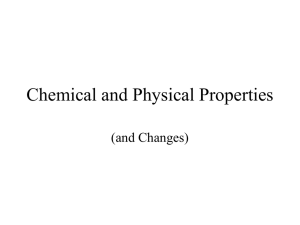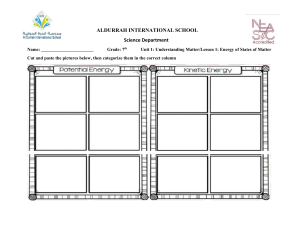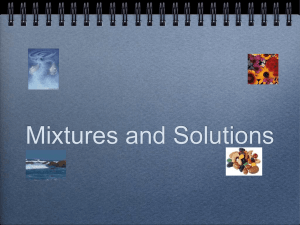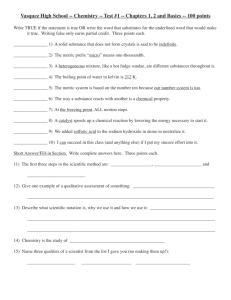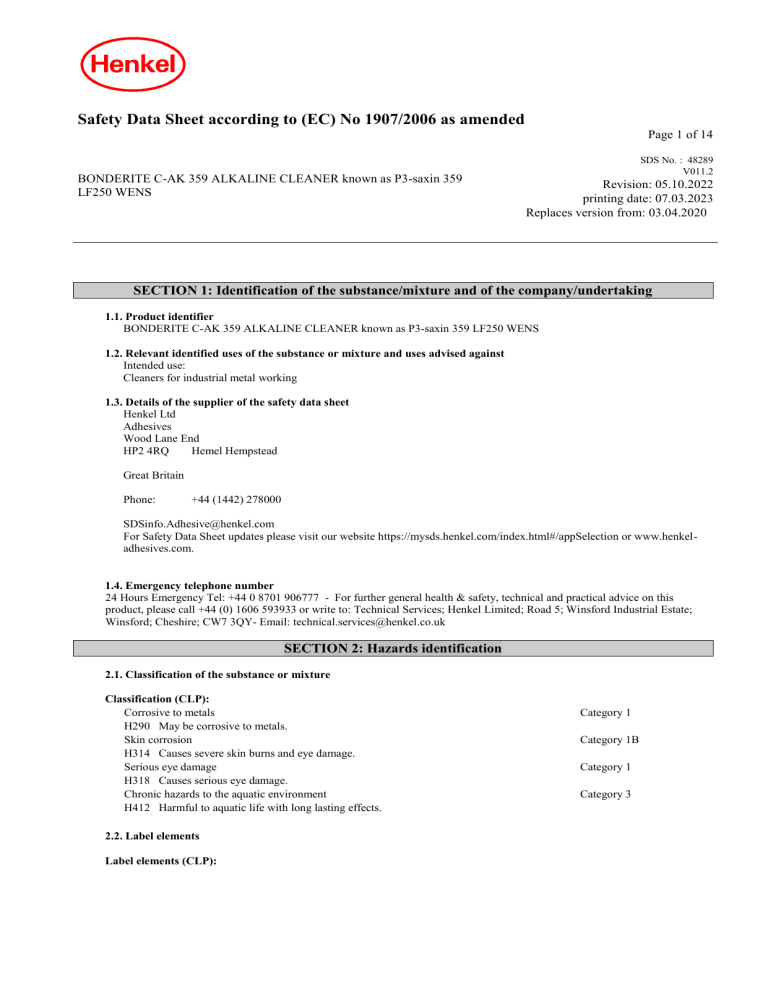
Safety Data Sheet according to (EC) No 1907/2006 as amended Page 1 of 14 BONDERITE C-AK 359 ALKALINE CLEANER known as P3-saxin 359 LF250 WENS SDS No. : 48289 V011.2 Revision: 05.10.2022 printing date: 07.03.2023 Replaces version from: 03.04.2020 SECTION 1: Identification of the substance/mixture and of the company/undertaking 1.1. Product identifier BONDERITE C-AK 359 ALKALINE CLEANER known as P3-saxin 359 LF250 WENS 1.2. Relevant identified uses of the substance or mixture and uses advised against Intended use: Cleaners for industrial metal working 1.3. Details of the supplier of the safety data sheet Henkel Ltd Adhesives Wood Lane End HP2 4RQ Hemel Hempstead Great Britain Phone: +44 (1442) 278000 SDSinfo.Adhesive@henkel.com For Safety Data Sheet updates please visit our website https://mysds.henkel.com/index.html#/appSelection or www.henkeladhesives.com. 1.4. Emergency telephone number 24 Hours Emergency Tel: +44 0 8701 906777 - For further general health & safety, technical and practical advice on this product, please call +44 (0) 1606 593933 or write to: Technical Services; Henkel Limited; Road 5; Winsford Industrial Estate; Winsford; Cheshire; CW7 3QY- Email: technical.services@henkel.co.uk SECTION 2: Hazards identification 2.1. Classification of the substance or mixture Classification (CLP): Corrosive to metals H290 May be corrosive to metals. Skin corrosion H314 Causes severe skin burns and eye damage. Serious eye damage H318 Causes serious eye damage. Chronic hazards to the aquatic environment H412 Harmful to aquatic life with long lasting effects. 2.2. Label elements Label elements (CLP): Category 1 Category 1B Category 1 Category 3 SDS No.: 48289 V011.2 BONDERITE C-AK 359 ALKALINE CLEANER known as P3-saxin 359 LF250 WENS Page 2 of 14 Hazard pictogram: Silicic acid, sodium salt <=1,6, solution Contains Potassium hydroxide Signal word: Danger Hazard statement: H290 May be corrosive to metals. H314 Causes severe skin burns and eye damage. H412 Harmful to aquatic life with long lasting effects. Precautionary statement: Prevention P260 Do not breathe mist/spray. P280 Wear protective gloves/protective clothing/eye protection/face protection. Precautionary statement: Response P303+P361+P353 IF ON SKIN (or hair): Take off immediately all contaminated clothing. Rinse skin with water [or shower]. P305+P351+P338 IF IN EYES: Rinse cautiously with water for several minutes. Remove contact lenses, if present and easy to do. Continue rinsing. P310 Immediately call a POISON CENTER or doctor. 2.3. Other hazards None if used properly. Not fulfilling Persistent, Bioaccumulative and Toxic (PBT), very Persistent and very Bioaccumulative (vPvB) criteria. Following substances are present in a concentration >= 0,1% and fulfill the criteria for PBT/vPvB, or were identified as endocrine disruptor (ED): This mixture does not contain any substances in concentration ≥ the concentration limit that are assessed to be a PBT, vPvB or ED. SECTION 3: Composition/information on ingredients 3.2. Mixtures SDS No.: 48289 V011.2 BONDERITE C-AK 359 ALKALINE CLEANER known as P3-saxin 359 LF250 WENS Page 3 of 14 Declaration of the ingredients according to CLP (EC) No 1272/2008: Hazardous components CAS-No. EC Number REACH-Reg No. Silicic acid, sodium salt <=1,6, solution 1344-09-8 215-687-4 01-2119448725-31 Concentration Classification Specific Conc. Limits, Mfactors and ATEs 1- < 5 % Skin Corr. 1B, H314 Fatty alcohol, C12-18, ethoxylate BU ether 146340-16-1 1- < 5 % Skin Irrit. 2, H315 Aquatic Acute 1, H400 Aquatic Chronic 3, H412 M acute = 1 Potassium hydroxide 1310-58-3 215-181-3 01-2119487136-33 0,5- < 2 % Skin Corr. 1A, H314 Acute Tox. 4, Oral, H302 Met. Corr. 1, H290 Skin Corr. 1A; H314; C >= 5 % Skin Corr. 1B; H314; C 2 - < 5 % Skin Irrit. 2; H315; C 0,5 - < 2 % Eye Irrit. 2; H319; C 0,5 - < 2 % Quaternary ammonium compounds, benzyl-C12-18alkyldimethyl, chlorides 68391-01-5 269-919-4 0,1- < 1 % Acute Tox. 4, Oral, H302 Acute Tox. 4, Dermal, H312 Skin Corr. 1B, H314 Aquatic Acute 1, H400 Aquatic Chronic 1, H410 M acute = 10 M chronic = 1 Add. Information For full text of the H - statements and other abbreviations see section 16 "Other information". Substances without classification may have community workplace exposure limits available. Declaration of ingredients according to Detergent Regulation 648/2004/EC 5 - 15 % <5% phosphates cationic surfactants non-ionic surfactants SECTION 4: First aid measures 4.1. Description of first aid measures Inhalation: Move to fresh air, consult doctor if complaint persists. Skin contact: Rinse with running water and soap. Apply replenishing cream. Change all contaminated clothing. Seek medical attention from a specialist. Eye contact: Immediately flush eyes with soft jet of water or eye rinse solution for at least 15 minutes. Hold eyelid wide-open. Seek a doctor/hospital, eye flushing should continue during transportation to a doctor. Ingestion: Rinse out mouth, drink 1-2 glasses of water, do not induce vomiting. Immediate medical treatment necessary. 4.2. Most important symptoms and effects, both acute and delayed Causes burns. 4.3. Indication of any immediate medical attention and special treatment needed See section: Description of first aid measures SECTION 5: Firefighting measures SDS No.: 48289 V011.2 BONDERITE C-AK 359 ALKALINE CLEANER known as P3-saxin 359 LF250 WENS 5.1. Extinguishing media Suitable extinguishing media: All common extinguishing agents are suitable. Extinguishing media which must not be used for safety reasons: None known 5.2. Special hazards arising from the substance or mixture Formation of toxic gases is possible during heating or in fires. 5.3. Advice for firefighters Wear protective equipment. Wear self-contained breathing apparatus. Additional information: Cool endangered containers with water spray jet. SECTION 6: Accidental release measures 6.1. Personal precautions, protective equipment and emergency procedures Avoid contact with skin and eyes. 6.2. Environmental precautions Do not empty into drains / surface water / ground water. 6.3. Methods and material for containment and cleaning up Remove with liquid-absorbing material (sand, peat, sawdust). Dispose of contaminated material as waste according to Section 13. 6.4. Reference to other sections See advice in section 8 SECTION 7: Handling and storage 7.1. Precautions for safe handling Avoid skin and eye contact. Ensure that workrooms are adequately ventilated. See advice in section 8 Hygiene measures: Wash hands before work breaks and after finishing work. Do not eat, drink or smoke while working. Wash contaminated clothing before reuse. The workplace should be equipped with an emergency shower and eye-rinsing facility. 7.2. Conditions for safe storage, including any incompatibilities Keep container tightly sealed. Store in a cool, frost-free place. Must be stored in a room with spill collection facilities. Keep only in original container. Do not store together with strong acids. 7.3. Specific end use(s) Cleaners for industrial metal working Page 4 of 14 SDS No.: 48289 V011.2 BONDERITE C-AK 359 ALKALINE CLEANER known as P3-saxin 359 LF250 WENS Page 5 of 14 SECTION 8: Exposure controls/personal protection 8.1. Control parameters Occupational Exposure Limits Valid for Great Britain Ingredient [Regulated substance] ppm Potassium hydroxide 1310-58-3 [POTASSIUM HYDROXIDE] mg/m3 Value type 2 Short Term Exposure Limit (STEL): mg/m3 Value type 2 Short Term Exposure Limit (STEL): Short term exposure limit category / Remarks 15 minutes Regulatory list Short term exposure limit category / Remarks 15 minutes Regulatory list EH40 WEL Occupational Exposure Limits Valid for Ireland Ingredient [Regulated substance] ppm Potassium hydroxide 1310-58-3 [POTASSIUM HYDROXIDE] IR_OEL Derived No-Effect Level (DNEL): Name on list Potassium hydroxide 1310-58-3 Potassium hydroxide 1310-58-3 Application Area Workers Route of Exposure inhalation General population inhalation Health Effect Long term exposure - local effects Long term exposure - local effects Exposure Time Value Remarks 1 mg/m3 1 mg/m3 Biological Exposure Indices: None 8.2. Exposure controls: Engineering controls: Ensure good ventilation/suction at the workplace. Respiratory protection: In case of aerosol formation, we recommend wearing of appropriate respiratory protection equipment with ABEK P2 filter (EN 14387). This recommendation should be matched to local conditions. Hand protection: Chemical-resistant protective gloves (EN 374). Suitable materials for short-term contact or splashes (recommended: at least protection index 2, corresponding to > 30 minutes permeation time as per EN 374): Polychloroprene (CR; >= 1 mm thickness) or natural rubber (NR; >=1 mm thickness) Suitable materials for longer, direct contact (recommended: protection index 6, corresponding to > 480 minutes permeation time as per EN 374): Polychloroprene (CR; >= 1 mm thickness) or natural rubber (NR; >=1 mm thickness) This information is based on literature references and on information provided by glove manufacturers, or is derived by analogy with similar substances. Please note that in practice the working life of chemical-resistant protective gloves may be considerably shorter than the permeation time determined in accordance with EN 374 as a result of the many influencing factors (e.g. temperature). If signs of wear and tear are noticed then the gloves should be replaced. Eye protection: Goggles which can be tightly sealed. Protective eye equipment should conform to EN166. SDS No.: 48289 V011.2 BONDERITE C-AK 359 ALKALINE CLEANER known as P3-saxin 359 LF250 WENS Page 6 of 14 Skin protection: Protective clothing that covers arms and legs. Protective clothing should conform to EN 14605 for liquid splashes or to EN 13982 for dusts. Advices to personal protection equipment: The information provided on personal protective equipment is for guidance purposes only. A full risk assessment should be conducted prior to using this product to determine the appropriate personal protective equipment to suit local conditions. Personal protective equipment should conform to the relevant EN standard. SECTION 9: Physical and chemical properties 9.1. Information on basic physical and chemical properties Physical state liquid Delivery form liquid Colour colourless, up to, light yellow Odor no valuation Melting point Not applicable, Product is a liquid Solidification temperature < 0 °C (< 32 °F) Initial boiling point 100 °C (212 °F)no method Flammability The product is not flammable. Explosive limits Not applicable, The product is not flammable. Flash point > 100 °C (> 212 °F) No flash point up to 100°C. Aqueous preparation. Auto-ignition temperature Not applicable, Aqueous solution Decomposition temperature Currently under determination pH 12,7 - 13,1 PH-value, potentiometer (20 °C (68 °F); Conc.: 100 % product) pH 10,8 - 11,2 PH-value, potentiometer (20 °C (68 °F); Conc.: 1 % product; Solvent: Demineralised water) Viscosity (kinematic) Not applicable, Aqueous solution Solubility (qualitative) fully soluble (20 °C (68 °F); Solvent: Water) Partition coefficient: n-octanol/water Not applicable Mixture Vapour pressure 23,4 mbar (20 °C (68 °F)) Density 1,220 - 1,240 g/cm3 (20 °C (68 °F)) Relative vapour density: <1 (20 °C) Particle characteristics Not applicable Product is a liquid 9.2. Other information Other information not applicable for this product SECTION 10: Stability and reactivity 10.1. Reactivity Reaction with strong acids. 10.2. Chemical stability Stable under recommended storage conditions. 10.3. Possibility of hazardous reactions See section reactivity SDS No.: 48289 V011.2 BONDERITE C-AK 359 ALKALINE CLEANER known as P3-saxin 359 LF250 WENS Page 7 of 14 10.4. Conditions to avoid No decomposition if used according to specifications. 10.5. Incompatible materials See section reactivity. 10.6. Hazardous decomposition products None if used for intended purpose. In case of fire toxic gases can be released. SECTION 11: Toxicological information General toxicological information: The classification is based on an expert judgement with regard to existing specifications of the substances, the base/acid reserve and from In Vitro experiments. 1.1 Information on hazard classes as defined in Regulation (EC) No 1272/2008 Acute oral toxicity: The mixture is classified based on calculation method referring to the classified substances present in the mixture. Hazardous substances CAS-No. Silicic acid, sodium salt <=1,6, solution 1344-09-8 Fatty alcohol, C12-18, ethoxylate BU ether 146340-16-1 Potassium hydroxide 1310-58-3 Value type LD50 Value Species Method 3.400 mg/kg rat OECD Guideline 401 (Acute Oral Toxicity) LD50 > 2.000 mg/kg rat OECD Guideline 401 (Acute Oral Toxicity) LD50 388 mg/kg rat OECD Guideline 425 (Acute Oral Toxicity: Up-and-Down Procedure) Acute dermal toxicity: The mixture is classified based on calculation method referring to the classified substances present in the mixture. Hazardous substances CAS-No. Silicic acid, sodium salt <=1,6, solution 1344-09-8 Value type LD50 Value > 5.000 mg/kg Species Method rat EPA OPPTS 870.1200 (Acute Dermal Toxicity) Acute inhalative toxicity: The mixture is classified based on calculation method referring to the classified substances present in the mixture. Hazardous substances CAS-No. Silicic acid, sodium salt <=1,6, solution 1344-09-8 Value type LC50 Value > 2,06 mg/l Test atmosphere Exposure time vapour 4h Species Method Rat EPA OPPTS 870.1300 (Acute inhalation toxicity) Skin corrosion/irritation: The mixture is classified based on calculation method referring to the classified substances present in the mixture. Hazardous substances CAS-No. Silicic acid, sodium salt <=1,6, solution 1344-09-8 Potassium hydroxide 1310-58-3 Result Species Method corrosive Exposure time 4h rabbit OECD Guideline 404 (Acute Dermal Irritation / Corrosion) corrosive 4h rabbit OECD Guideline 404 (Acute Dermal Irritation / Corrosion) SDS No.: 48289 V011.2 BONDERITE C-AK 359 ALKALINE CLEANER known as P3-saxin 359 LF250 WENS Page 8 of 14 Serious eye damage/irritation: The mixture is classified based on calculation method referring to the classified substances present in the mixture. Hazardous substances CAS-No. Potassium hydroxide 1310-58-3 Result Exposure time corrosive Species Method rabbit OECD Guideline 405 (Acute Eye Irritation / Corrosion) Respiratory or skin sensitization: The mixture is classified based on threshold limits referring to the classified substances present in the mixture. Hazardous substances CAS-No. Silicic acid, sodium salt <=1,6, solution 1344-09-8 Potassium hydroxide 1310-58-3 Result Test type Species Method not sensitising Mouse local lymphnode assay (LLNA) mouse OECD Guideline 429 (Skin Sensitisation: Local Lymph Node Assay) not sensitising Intracutaneus test guinea pig Landsteiner & Jacobs Method Germ cell mutagenicity: The mixture is classified based on threshold limits referring to the classified substances present in the mixture. Hazardous substances CAS-No. Silicic acid, sodium salt <=1,6, solution 1344-09-8 Silicic acid, sodium salt <=1,6, solution 1344-09-8 Silicic acid, sodium salt <=1,6, solution 1344-09-8 Potassium hydroxide 1310-58-3 Result negative negative negative negative Type of study / Route of administration bacterial reverse mutation assay (e.g Ames test) in vitro mammalian chromosome aberration test mammalian cell gene mutation assay Metabolic activation / Exposure time with and without bacterial reverse mutation assay (e.g Ames test) with and without Species Method OECD Guideline 471 (Bacterial Reverse Mutation Assay) OECD Guideline 473 (In vitro Mammalian Chromosome Aberration Test) OECD Guideline 476 (In vitro Mammalian Cell Gene Mutation Test) not specified with and without with and without Carcinogenicity No data available. Reproductive toxicity: The mixture is classified based on threshold limits referring to the classified substances present in the mixture. Hazardous substances CAS-No. Silicic acid, sodium salt <=1,6, solution 1344-09-8 STOT-single exposure: No data available. Result / Value NOAEL P > 159 mg/kg Test type multigenerat ion study Route of application oral: drinking water Species Method rat not specified SDS No.: 48289 V011.2 BONDERITE C-AK 359 ALKALINE CLEANER known as P3-saxin 359 LF250 WENS Page 9 of 14 STOT-repeated exposure:: The mixture is classified based on threshold limits referring to the classified substances present in the mixture. Hazardous substances CAS-No. Silicic acid, sodium salt <=1,6, solution 1344-09-8 Result / Value NOAEL 2.400 mg/kg Aspiration hazard: No data available. 11.2 Information on other hazards not applicable Route of application oral: feed Exposure time / Frequency of treatment 4w daily Species Method rat OECD Guideline 407 (Repeated Dose 28-Day Oral Toxicity in Rodents) SDS No.: 48289 V011.2 BONDERITE C-AK 359 ALKALINE CLEANER known as P3-saxin 359 LF250 WENS Page 10 of 14 SECTION 12: Ecological information General ecological information: Locally harmful for aquatic and landliving organisms because of high pH and corrosive properties. Do not empty into drains / surface water / ground water. The biodegradability of the surfactants contained in the product is in accordance with the requirements of the EU Detergent Regulation (EC/648/2004). The surfactants contained in the products are primary biodegradable to at least 90% on average. 12.1. Toxicity Toxicity (Fish): The mixture is classified based on calculation method referring to the classified substances present in the mixture. Hazardous substances CAS-No. Silicic acid, sodium salt <=1,6, solution 1344-09-8 Fatty alcohol, C12-18, ethoxylate BU ether 146340-16-1 Value type LC50 Value Exposure time Species Method > 100 mg/l 96 h Brachydanio rerio (new name: Danio rerio) not specified LC50 > 0,1 - 1 mg/l 96 h Brachydanio rerio (new name: Danio rerio) Potassium hydroxide 1310-58-3 Quaternary ammonium compounds, benzyl-C12-18alkyldimethyl, chlorides 68391-01-5 Quaternary ammonium compounds, benzyl-C12-18alkyldimethyl, chlorides 68391-01-5 LC50 80 mg/l 96 h NOEC 0,032 mg/l 34 d Western mosquitofish (Gambusia affinis) Pimephales promelas ISO 7346-1 (Determination of the Acute Lethal Toxicity of Substances to a Freshwater Fish [Brachydanio rerio Hamilton-Buchanan (Teleostei, Cyprinidae)] not specified LC50 0,93 mg/l 96 h Oncorhynchus mykiss OECD Guideline 210 (fish early lite stage toxicity test) OECD Guideline 203 (Fish, Acute Toxicity Test) Toxicity (Daphnia): The mixture is classified based on calculation method referring to the classified substances present in the mixture. Hazardous substances CAS-No. Potassium hydroxide 1310-58-3 Value type EC50 Value Quaternary ammonium compounds, benzyl-C12-18alkyldimethyl, chlorides 68391-01-5 EC50 0,016 mg/l Exposure time Species > 100 mg/l Daphnia sp. 48 h Daphnia magna Method OECD Guideline 202 (Daphnia sp. Acute Immobilisation Test) OECD Guideline 202 (Daphnia sp. Acute Immobilisation Test) Chronic toxicity to aquatic invertebrates The mixture is classified based on calculation method referring to the classified substances present in the mixture. Hazardous substances CAS-No. Fatty alcohol, C12-18, ethoxylate BU ether 146340-16-1 Quaternary ammonium compounds, benzyl-C12-18alkyldimethyl, chlorides 68391-01-5 Toxicity (Algae): Value type NOEC Value Exposure time Species Method > 0,1 - 1 mg/l 21 d Daphnia magna OECD 211 (Daphnia magna, Reproduction Test) NOEC 0,0042 mg/l 21 d Daphnia magna OECD 211 (Daphnia magna, Reproduction Test) SDS No.: 48289 V011.2 BONDERITE C-AK 359 ALKALINE CLEANER known as P3-saxin 359 LF250 WENS Page 11 of 14 The mixture is classified based on calculation method referring to the classified substances present in the mixture. Hazardous substances CAS-No. Quaternary ammonium compounds, benzyl-C12-18alkyldimethyl, chlorides 68391-01-5 Value type EC50 Value Exposure time Species 0,049 mg/l 72 h Method Selenastrum capricornutum OECD Guideline 201 (Alga, (new name: Pseudokirchneriella Growth Inhibition Test) subcapitata) Toxicity to microorganisms The mixture is classified based on calculation method referring to the classified substances present in the mixture. Hazardous substances CAS-No. Potassium hydroxide 1310-58-3 Quaternary ammonium compounds, benzyl-C12-18alkyldimethyl, chlorides 68391-01-5 Value type EC0 Value Exposure time Species Method > 100 mg/l 30 min not specified EC50 7,75 mg/l 3h activated sludge OECD Guideline 209 (Activated Sludge, Respiration Inhibition Test) 12.2. Persistence and degradability Hazardous substances CAS-No. Quaternary ammonium compounds, benzyl-C12-18alkyldimethyl, chlorides 68391-01-5 Result Test type Degradability readily biodegradable aerobic 84 % Exposure time 28 d Method OECD Guideline 301 B (Ready Biodegradability: CO2 Evolution Test) 12.3. Bioaccumulative potential No data available. 12.4. Mobility in soil No data available. 12.5. Results of PBT and vPvB assessment Hazardous substances CAS-No. Fatty alcohol, C12-18, ethoxylate BU ether 146340-16-1 Potassium hydroxide 1310-58-3 Quaternary ammonium compounds, benzylC12-18-alkyldimethyl, chlorides 68391-01-5 PBT / vPvB Not fulfilling Persistent, Bioaccumulative and Toxic (PBT), very Persistent and very Bioaccumulative (vPvB) criteria. According to Annex XIII of regulation (EC) 1907/2006 a PBT and vPvB assessment shall not be conducted for inorganic substances. Not fulfilling Persistent, Bioaccumulative and Toxic (PBT), very Persistent and very Bioaccumulative (vPvB) criteria. 12.6. Endocrine disrupting properties not applicable 12.7. Other adverse effects If acidic or alkaline products are discharged into wastewater installations care must be taken that the discharged wastewater has a pH in the range pH 6 - 10, as pH variations could cause disorders in wastewater channels and biological sewage treatment plants. The local discharge regulations take precedence. SECTION 13: Disposal considerations 13.1. Waste treatment methods SDS No.: 48289 V011.2 BONDERITE C-AK 359 ALKALINE CLEANER known as P3-saxin 359 LF250 WENS Page 12 of 14 Product disposal: In consultation with the responsible local authority, must be subjected to special treatment. Waste code EWC/EAK 070608 The valid EWC waste code numbers are source-related. The manufacturer is therefore unable to specify EWC waste codes for the articles or products used in the various sectors. The EWC codes listed are intended as a recommendation for users. We will be happy to advise you. SECTION 14: Transport information 14.1. UN number or ID number ADR RID ADN IMDG IATA 14.2. UN proper shipping name ADR RID ADN IMDG IATA 14.3. III III III III III Environmental hazards ADR RID ADN IMDG IATA 14.6. 8 8 8 8 8 Packing group ADR RID ADN IMDG IATA 14.5. CAUSTIC ALKALI LIQUID, N.O.S. (Potassium hydroxide,Sodium silicate) CAUSTIC ALKALI LIQUID, N.O.S. (Potassium hydroxide,Sodium silicate) CAUSTIC ALKALI LIQUID, N.O.S. (Potassium hydroxide,Sodium silicate) CAUSTIC ALKALI LIQUID, N.O.S. (Potassium hydroxide,Sodium silicate) Caustic alkali liquid, n.o.s. (Potassium hydroxide,Sodium silicate) Transport hazard class(es) ADR RID ADN IMDG IATA 14.4. 1719 1719 1719 1719 1719 not applicable not applicable not applicable not applicable not applicable Special precautions for user ADR not applicable SDS No.: 48289 V011.2 BONDERITE C-AK 359 ALKALINE CLEANER known as P3-saxin 359 LF250 WENS RID ADN IMDG IATA 14.7. Page 13 of 14 Tunnelcode: (E) not applicable not applicable not applicable not applicable Maritime transport in bulk according to IMO instruments not applicable SECTION 15: Regulatory information 15.1. Safety, health and environmental regulations/legislation specific for the substance or mixture Ozone Depleting Substance (ODS) (Regulation (EC) No 1005/2009): Not applicable Prior Informed Consent (PIC) (Regulation (EU) No 649/2012): Not applicable Persistent organic pollutants (Regulation (EU) 2019/1021): Not applicable VOC content 0,0 % (2010/75/EU) 15.2. Chemical safety assessment A chemical safety assessment has not been carried out. National regulations/information (Great Britain): Remarks Control of Substances Hazardous to Health Regulations (COSHH), and related guidance, e.g COSHH Essentials. EH40 Occupational Exposure Limits Chemicals (Hazard Information & Packaging for Supply) Regulations. The Personnel Protective Equipment at Work Regulations. The Carriage of Dangerous Goods by Road Regulations. The Health & Safety at Work Act 1974. (Note: Use latest editions/amendments of above referenced documents.) SDS No.: 48289 V011.2 BONDERITE C-AK 359 ALKALINE CLEANER known as P3-saxin 359 LF250 WENS Page 14 of 14 SECTION 16: Other information The labelling of the product is indicated in Section 2. The full text of all abbreviations indicated by codes in this safety data sheet are as follows: H290 May be corrosive to metals. H302 Harmful if swallowed. H312 Harmful in contact with skin. H314 Causes severe skin burns and eye damage. H315 Causes skin irritation. H400 Very toxic to aquatic life. H410 Very toxic to aquatic life with long lasting effects. H412 Harmful to aquatic life with long lasting effects. ED: EU OEL: EU EXPLD 1: EU EXPLD 2 SVHC: PBT: PBT/vPvB: vPvB: Substance identified as having endocrine disrupting properties Substance with a Union workplace exposure limit Substance listed in Annex I, Reg (EC) No. 2019/1148 Substance listed in Annex II, Reg (EC) No. 2019/1148 Substance of very high concern (REACH Candidate List) Substance fulfilling persistent, bioaccumulative and toxic criteria Substance fulfilling persistent, bioaccumulative and toxic plus very persistent and very bioaccumulative criteria Substance fulfilling very persistent and very bioaccumulative criteria Further information: This Safety Data Sheet has been produced for sales from Henkel to parties purchasing from Henkel, is based on Regulation (EC) No 1907/2006 and provides information in accordance with applicable regulations of the European Union only. In that respect, no statement, warranty or representation of any kind is given as to compliance with any statutory laws or regulations of any other jurisdiction or territory other than the European Union. When exporting to territories other than the European Union, please consult with the respective Safety Data Sheet of the concerned territory to ensure compliance or liaise with Henkel´s Product Safety and Regulatory Affairs Department (SDSinfo.Adhesive@henkel.com) prior to export to other territories than the European Union. This information is based on our current level of knowledge and relates to the product in the state in which it is delivered. It is intended to describe our products from the point of view of safety requirements and is not intended to guarantee any particular properties. Dear Customer, Henkel is committed to creating a sustainable future by promoting opportunities along the entire value chain. If you would like to contribute by switching from a paper to the electronic version of SDS, please contact the local Customer Service representative. We recommend to use a non-personal email address (e.g. SDS@your_company.com). Relevant changes in this safety data sheet are indicated by vertical lines at the left margin in the body of this document. Corresponding text is displayed in a different color on shadowed fields.
